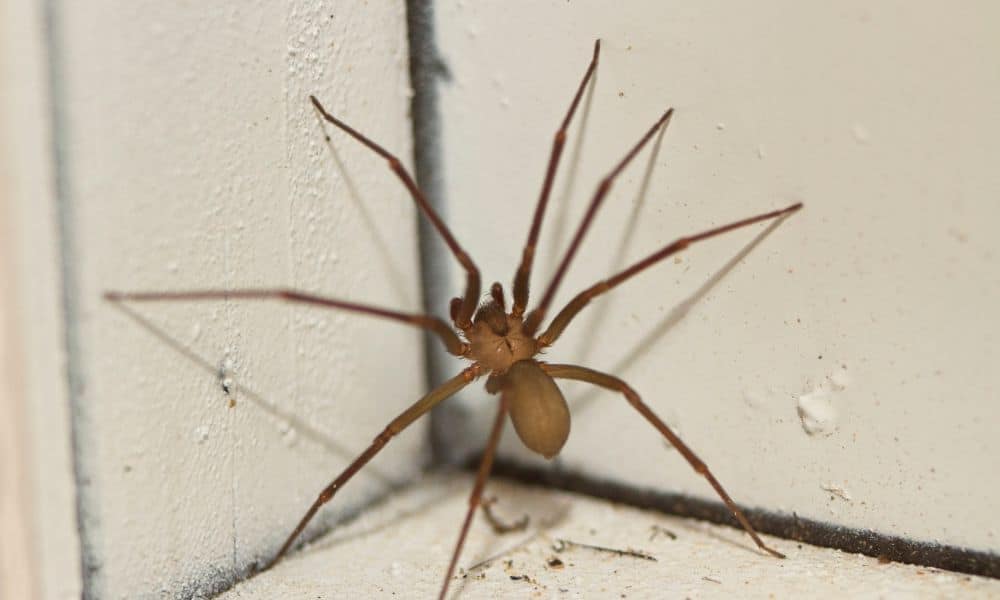Brown Recluse Spiders frighten people on two levels. One, their bite can cause necrosis, which makes the affected area resemble a corpse. *shudder* And two, it looks like a BBS – Basic Brown Spider – so it’s easy to mistake it for many other species! That’s why it helps to know the signs of Brown Recluse infestation and avoid the unnecessary panic, so let’s do it!
What is a Brown Recluse Spider?
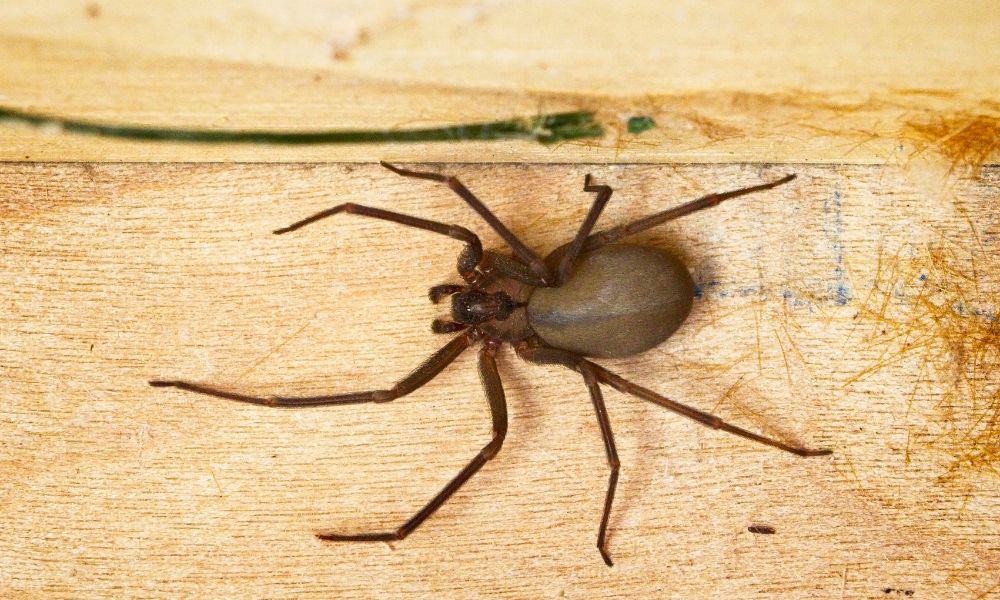
A Brown Recluse Spider is a pale brown spider with six eyes, long spindly legs, and a violin-shaped birthmark at the back of its head. That body part is technically the cephalothorax, a combination of its head and chest. When a Brown Recluse bites you, you might get allergic reactions that cause sores, turn the skin green, and fill it with pus, like a rotting open wound.
This is the necrosis we mentioned earlier, and it’s caused by dead skin cells and tissues. The section around the bite literally looks like a decomposed body, and it can be terrifying. That said, the Brown Recluse isn’t the only spider in the Recluse family. But it’s the most common type of recluse so people are rightfully afraid of it. The bite rarely kills though, it’s just scary.
It’s also useful to note the Brown Recluse Spider, sometimes called the Fiddleback or Violin Spider, isn’t the only one with that head marker. Other spider species like Pirate Spiders and Cellar Spiders have similar images behind their eyes so they’re sometimes mistaken for this Brown Fiddler. But Cellar Spiders have longer legs and Pirates have hairy ones with stripes.
Signs of Brown Recluse Infestation
Let’s review some of the tell-tale signs that Violin Spiders have set up camp in your house.
-
Seeing a Brown Recluse Spider
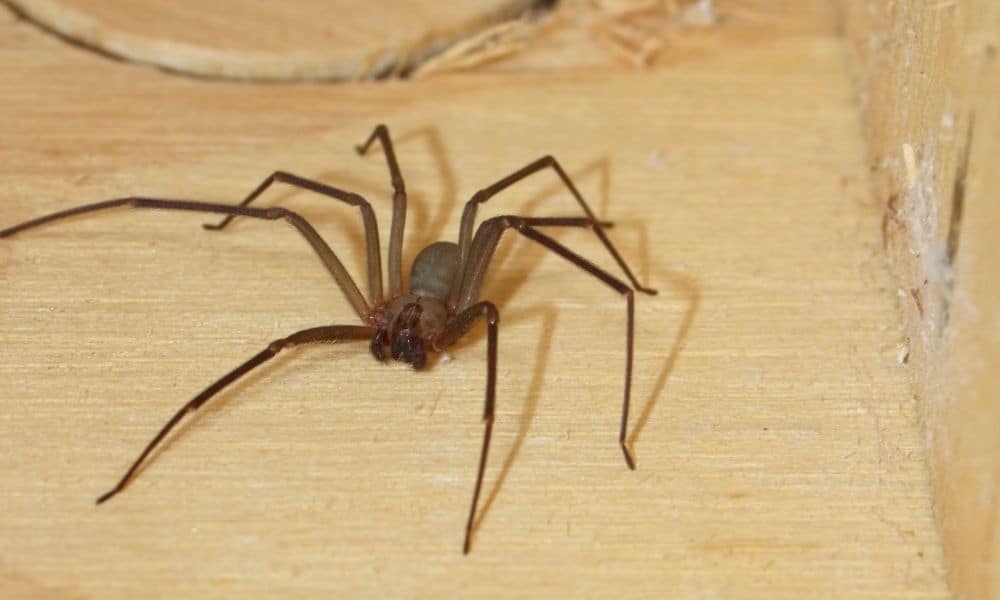
A female Fiddleback lays eggs between May and July, producing multiple egg sacs that have fifty eggs a piece. These eggs take a month to hatch and a year to reach adulthood. Also, a healthy Brown Fiddler can survive six months of drought with minimal food. Some have been shown to survive over a year without food or water, so they can be prolific and hardy.
If you see a single one hovering in your space, it probably has family and friends nearby. The most important thing is to make sure it’s a Brown Recluse, not one of its doppelgangers. That said, they don’t bite unless provoked, so if you accidentally sit on one or purposely smush it with your finger, you may receive a bite. Once you confirm its identity, just back away slowly.
-
Spotting a Brown Recluse Web
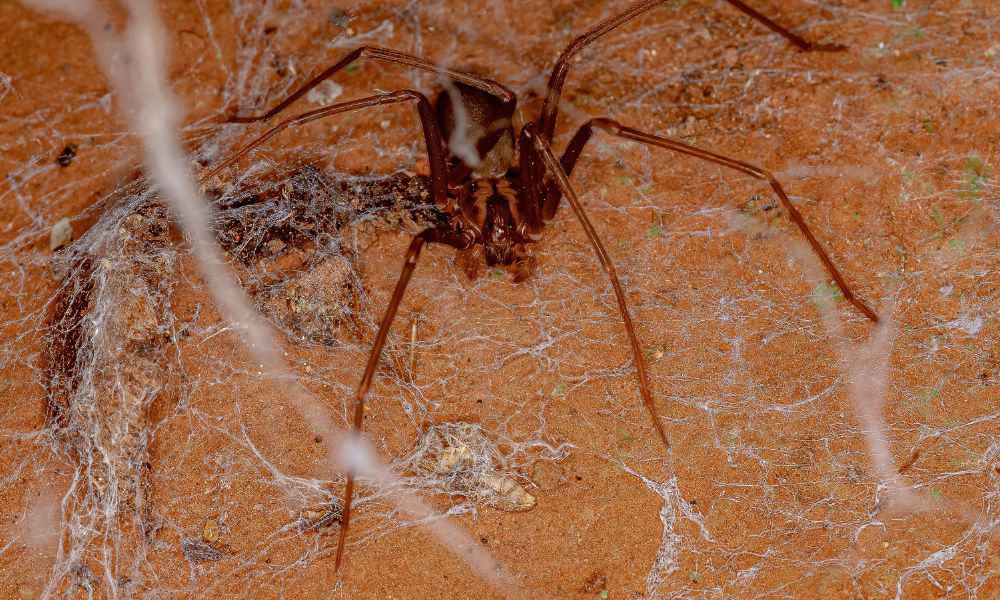
Brown Recluse Spiders can live for one or two years. They prefer to build webs in quiet areas with minimal traffic, so they choose the backs of wood piles, cellars, attics, unused closets, cluttered garages, and seasonal sheds. Once you start visiting these areas regularly, they’ll soon migrate elsewhere. During the day, they mostly hang out in the web and wait for food.
But at night, they leave the web to hunt. Curiously, they prefer to play dead when they feel threatened so it’s not easy to get a Brown Fiddler bite unless you roll over onto the spider in your sleep. You can identify Fiddleback webs because their strands are unevenly asymmetric. And if you can get close enough to check, the spiders have two front eyes and four side eyes.
-
Finding Egg Sacs Inside the Web
We’ve already mentioned that Brown Recluse Spiders can play dead. It might also rotate its body horizontally, amputate some of its legs, or lunge sideways when it’s scared. Detached legs don’t regenerate in Violin Spiders, though a few other species can grow new ones. But most of the time it’ll just run away. So, again, it’s not easy to make a Brown Fiddler bite you.
Also, while they prefer nesting in rotting tree barks outdoors, they often target cardboard if they live inside your house. Their habitats might have between one and five egg sacs, holding up to 300 eggs in total. So if you see Brown Recluse egg sacs in your home, you’ll soon have an infestation. Egg sacs are loose webbed cocoons that look like clumps of spider webbing.
-
Noticing an Abundance of Winged Pests
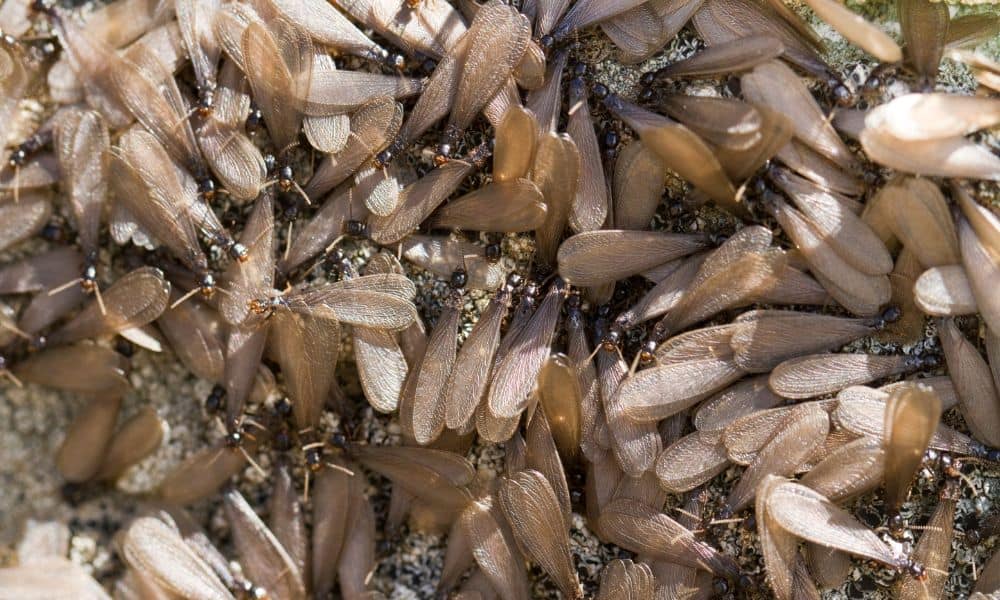
The word ‘recluse’ means ‘isolated, solitary, avoiding others’. And this spider is aptly named. As we keep saying, it’s unlikely to bite you unless you press it against your skin. It may have a web in an idle closet and when you finally take out those towels, clothes, gloves, beddings, or shoes, you accidentally bug the spider so it bites, pun intended. Bites are mostly harmless.
But if you’re already immuno-compromised, you might get nausea, fever, vomiting, rashes, or muscle pain before the wound starts to look rotten. In invalids and/or kids below seven years old, a nasty bite can sometimes kill. Interestingly, if you have lots of flying insects in your home, this could invite Violin Spiders due to the accessible food source, so watch out!
-
Conversely, Noting an Absence of Flying Bugs
When you’ve lived in your house for a while, you’ll notice the seasonal changes. You might know schools are closed when the neighborhood kids get noisier. You can tell which fruits, flowers, or bugs appear at certain times of the year. You may know when squirrels, birds, moles, and other rodents appear. You might start stashing insect repellent during mosquito months.
With this awareness, you know when to expect swarms of bees, wasps, flies, or mozzies. And if they suddenly seem to disappear, you’ll be relieved, but you could also be curious. If the ants and gnats vanish overnight, look around for potential exterminators like geckos and spiders. You might catch the culprit by finding signs of dead bugs trapped inside their webs.
-
Observing Unexplained Wounds and Blisters
As we said earlier, not all Brown Recluse bites develop that rotting quality. It only happens about 37% of the time. When it does, the affected area will hurt and itch 2 to 8 hours after the bite. This gets progressively worse over the next 12 to 36 hours and the necrotic ulcer will appear within a few days. It can grow up to 10” and get gangrene. You’ll need to see a doctor.
Since Fiddleback bites take several days to confirm, you should be wary if you spot sudden blisters on your body. If you can’t explain them with burns or work sores, and if they come with painful muscles, they might be spider bites. That said, it’s crucial to verify the Brown Recluse bite because a misdiagnosis such as MRSA (methicillin-resistant staph) can be fatal.
-
Confirming Paralysis or Kidney Issues in Pets

If you do get bitten by a spider – any spider – use an ice pack to soothe itching or swelling. If you can, try to identify or trap the spider in case you need to go to the hospital for anti-venom. Ideally, use a clear, glass jar with an airtight lid. Infected Fiddleback bites get a tetanus shot and the open wound will be appropriately treated. Really bad bites may need surgical work.
But most spider bites heal on their own, and a simple antihistamine may be enough to stop inflammation and other reactions. You might also get painkillers and/or meds to prevent muscle spasms. Here’s something to note – Brown Recluses can bite your pets too. So if your dog suddenly gets paralyzed or shows signs of kidney failure, check where s/he’s been playing.
-
Traveling to Pest Prone Areas
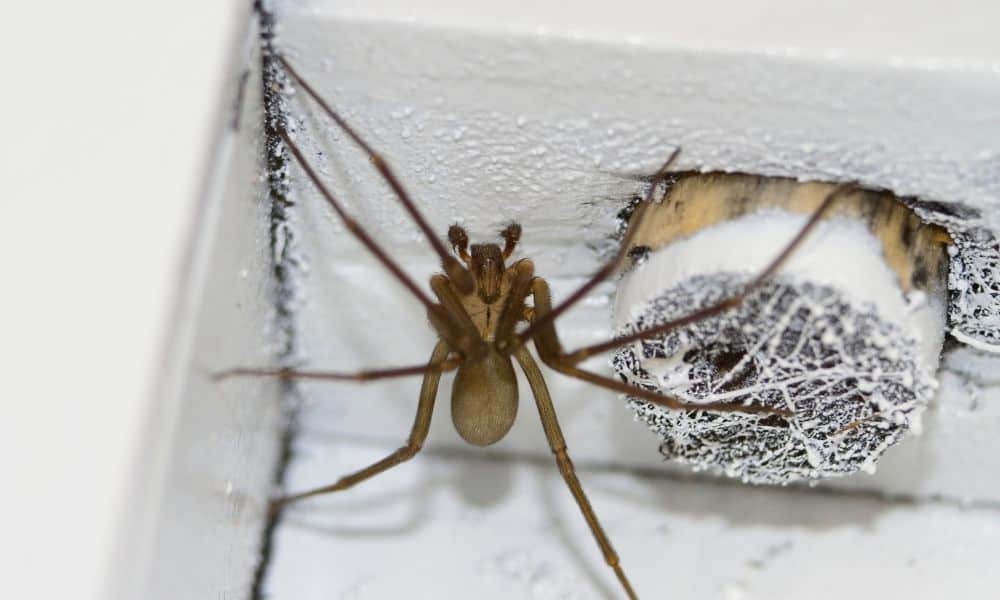
The treatment for a Brown Recluse bite will depend on its severity. You might need curettage to scrape out the infected tissues, or antibiotics to kill toxic micro-organisms. These should all be provided by trained medics though, so don’t try it at home. Speaking of home, people who travel regularly could inadvertently trigger fresh signs of a Brown Recluse infestation.
Before you visit any new place, it helps to do a quick Google search of common pests in that area. Most of us will look up interesting sites to visit and fun places to eat, but it helps to get familiar with the local pest population too. That way, when you head back home, you can check that you didn’t carry any stowaway bedbugs, roaches, or Brown Fiddlers in your bags.
-
Keeping a Collection of Undisturbed Cardboard
We hinted earlier that Brown Recluse Spiders are like cats because they both love cardboard boxes. So if you have a storage room full of cartons, or you run a seasonal shipping business, you’re at risk for Violin Spiders. Unless you’re cleaning and moving those cartons every day, they provide ideal hiding spots for both the spiders themselves and the bugs they like to eat.
The same applies if you’re a firewood supplier or if you have large personal stacks at home. After all, firewood needs to be dried months at a time before it’s ready to use, so you’ll always have a resting stack that’s prime real estate for Brown Fiddlers. The solution is to routinely rattle your piles of timber and cardboard boxes so the spiders don’t get too comfy in there.
Getting Rid of Brown Recluse Spiders
Once you’ve confirmed the presence of Fiddlebacks, remove their webs and block any cracks where they might weave new ones. Vacuum those hotspots regularly. Use sticky traps and aerosols to get rid of any stragglers. Use eucalyptus plants and diffusers to keep them away. Do you know any other signs of Brown Recluse infestation? Tell us in the comments below!
